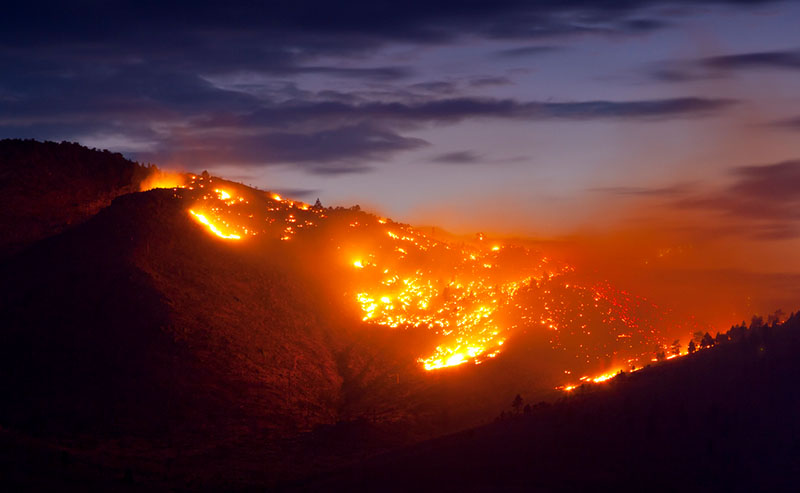According to the National Interagency Fire Center, there are now 106 active wildfires burning across 14 states and encompassing nearly 1.6 million acres. Alaska tops the list with 16, closely followed by Colorado with 13; Arizona with 12; and California with nine. Unfortunately, only seven of these massive fires are now 100% contained.
Among the most publicized and dangerous of these fires is California’s Mendocino Complex fire, which is burning outside Sacramento. Made up of two individual fires—the Ranch and River fires—it has now charred over 290,000 acres. According to CALFIRE, 75 homes have been destroyed, as have 68 other structures since the blaze broke out on the afternoon of July 27th. Several other homes have been damaged, and 11,300 structures remain threatened. The blaze, as reported by The New York Times today, is now considered the largest in modern state history, and experts say it may not be fully contained until September. As such, precautionary measures, including mandatory evacuation orders, remain in effect throughout the area.
The Carr Fire, which claimed the lives of eight people, also continues to burn in northern California. As of this post, it has destroyed over 1,000 homes in Redding and surrounding cities, and scorched over 163,000 acres. CALFIRE reports it as being 45% contained and accordingly, a continued threat to over 1,200 structures.
Given the size and frequency of fires like the Mendocino Complex Fire and the Carr Fire, it is increasingly evident that wildfires pose a serious threat to people, property, businesses, natural resources and more. And, not just now while they burn across the country, but in the future, as they leave areas prone to flooding, erosion and mudslides. According to the Centers for Disease Control and Prevention, mudslides can occur without warning, and cause between 25 and 50 deaths per year.
Our thoughts and best wishes go out to the residents, emergency managers, healthcare workers and public safety officials in these affected areas.






